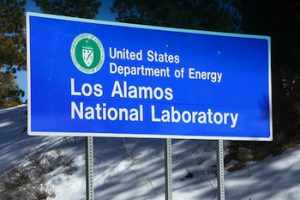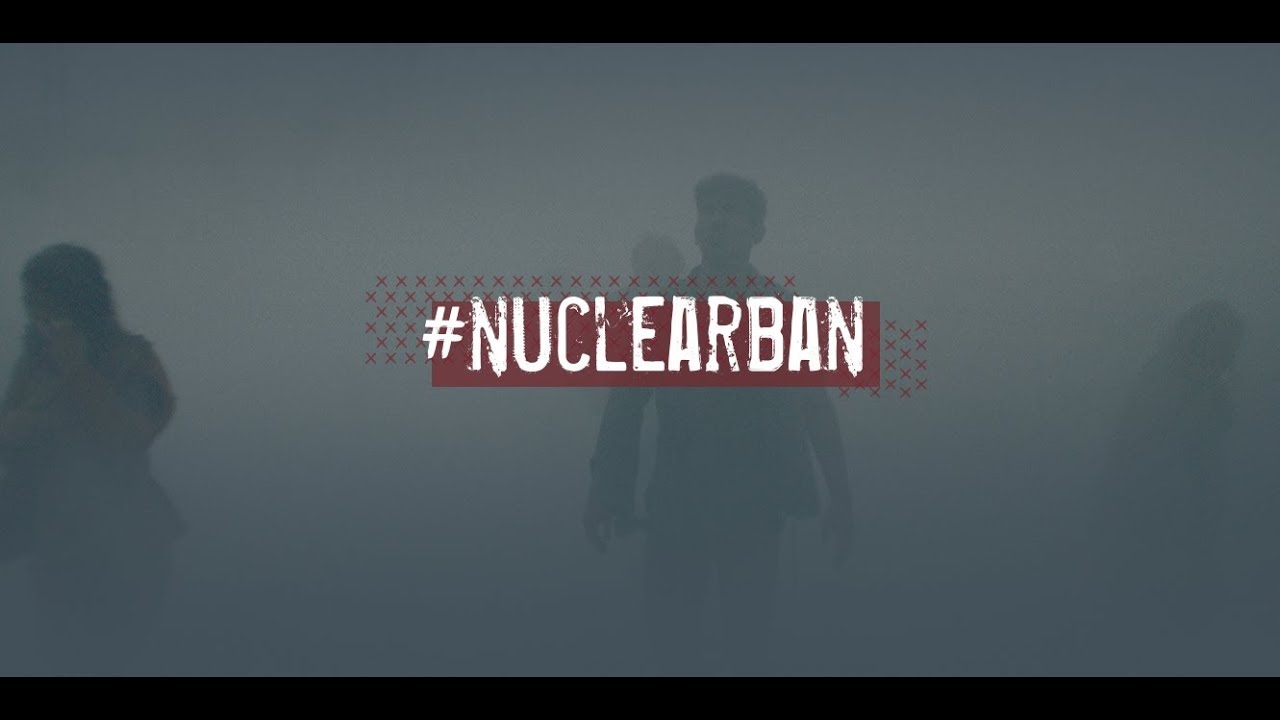2020
Nothing Found
It seems we can’t find what you’re looking for. Perhaps searching can help.
2019
Dangerous chromium plume closer to Los Alamos County well
Chemical contamination more than four times the state limit was detected late last month at the edge of a plume in the aquifer roughly 1,000 feet below Los Alamos National Laboratory.
BY REBECCA MOSS | santafenewmexican.com June 21, 2019
It is the closest high-level measurement of hexavalent chromium detected near the well used to pump drinking water to Los Alamos County, roughly a third of a mile away.
“Our drinking water supply is safe, and we are vigilantly working to keep it that way,” said Tim Glasco, utilities manager for Los Alamos County.
Hexavelent chromium, an industrial chemical tied to lung and other cancers, was found pooled below Sandia and Mortandad canyons in 2005, and environmental managers have since been working to define the full scope of the contamination. It spans at least a mile long and half-mile wide, and abuts San Ildefonso Pueblo.
"If a nuclear weapon were to explode right now, what would you choose? Live or die?" Over the course of a brutally honest conversation between two friends, the International Committee of the Red Cross' (ICRC) powerful short film shows the catastrophic humanitarian impact of nuclear weapons, the psychological trauma which would inevitably result from their use - and why we need to ban them. So powerful, in fact, that it just won a Bronze Lion at the Cannes Lions Festival, one of the highest recognitions in the creative and advertising industry!
At ICAN works closely with the ICRC and celebrates their work to raise awareness about the unacceptable humanitarian impact of nuclear weapons and the need for all countries to join the UN Treaty on the Prohibition of Nuclear weapons.
Powerful storytelling like this will help open eyes all over the world. Help us spread this message further:
 Daniel Ellsberg, author of The Doomsday Machine: Confessions of a Nuclear War Planner, anti-war activist and former US military analyst famous for releasing the Pentagon Papers in 1971, joins Joe Cirincione for a rare in-depth interview. Daniel discusses what he learned about US nuclear strategy during his time working at the RAND Corporation and the Pentagon, the use of deterrence theory to justify current nuclear arsenals, and the morality of threatening nuclear war.
Daniel Ellsberg, author of The Doomsday Machine: Confessions of a Nuclear War Planner, anti-war activist and former US military analyst famous for releasing the Pentagon Papers in 1971, joins Joe Cirincione for a rare in-depth interview. Daniel discusses what he learned about US nuclear strategy during his time working at the RAND Corporation and the Pentagon, the use of deterrence theory to justify current nuclear arsenals, and the morality of threatening nuclear war.
Also: Early Warning nuclear news analysis with Ploughshares Fund Deputy Director of Policy Mary Kaszynski and Roger L. Hale Fellow Catherine Killough https://www.ploughshares.org/pressthebutton
Listen and subscribe on libsyn
Executed for being an anti-nuclear activist

The incredible unknown story of “nuclear martyr” Nikos Nikiforidis
On March 5, 1951, 22-year-old Nikos Nikiforidis was executed in Greece because he was promoting the Stockholm Antinuclear Appeal (1950). Honoring his death, Greek IPPNW and PADOP organized an event this March in Athens to commemorate him and his courage. Below is an amalgamation of two presentations given about Nikiforidis at that event.
BY MARIA ARVANITI SOTIROPOULOU & PANOS TRIGAZIS | beyondnuclearinternational.org
Under present conditions, it seems inconceivable that a 22-year-old fighter for the anti-nuclear movement was arrested, sentenced to death by court martial and executed in Thessaloniki, on a charge of collecting signatures under the Stockholm Appeal for the abolition and prohibition of all nuclear weapons. But Nikos Nikiforidis was the first person (and perhaps also the only one) in the world to suffer such a fate.
At that time, the cold war was at its height on the international stage, and Greece was geographically on the border of the two worlds, the prevailing doctrine of its foreign policy being the “threat from the north”.
New Mexico land boss concerned with nuclear waste proposal
BY SUSAN MONTOYA BRYAN | apnews.com
ALBUQUERQUE, N.M. (AP) — State Land Commissioner Stephanie Garcia Richard says southeastern New Mexico, which is home to one of the world’s most prolific oil and gas basins, is not the right place for storing spent nuclear fuel.
In a letter to Holtec International, she outlined her concerns about plans to build a multibillion-dollar facility that would be capable of temporarily storing tons of high-level radioactive waste from commercial reactors around the U.S.
Nearly 2,500 oil and gas wells and other mineral developments operated by dozens of different businesses are located within a 10-mile (16-kilometer) radius of the proposed site. Garcia Richard contends that storing the waste above active oil, gas and mining operations raises serious safety concerns.
She accused the company of not addressing the potential safety issues and suggested that it hasn’t been forthcoming in its filings with the Nuclear Regulatory Commission, which is considering whether to issue a 40-year license for the facility.
“There is no guarantee that high-level nuclear waste can be safely transported to and through New Mexico. There is no guarantee that there won’t be a hazardous interaction between the storage site and nearby oil, gas and mining activities. There is no guarantee that this site will truly be ‘interim’ and won’t become the permanent dumping ground for our nation’s nuclear waste,” she said in a statement.
Holtec International has argued that the federal government has unmet obligations to find a permanent solution for dealing with the tons of waste building up at nuclear power plants and the proposed facility is needed.
LANL cleanup costs continue piling up

The U.S. Department of Energy in 2016 drafted a list of 17 projects at Los Alamos National Laboratory and in the surrounding town to clean up soil and groundwater that remained contaminated decades after the Manhattan Project and Cold War nuclear weapons work.
At the time, more than $2 billion had been spent in a decade on environmental cleanup projects. The Department of Energy estimated it would cost another $1.1 billion to $1.5 billion to finish the job — and up to 25 more years.
The work is far from complete.
Jay Coghlan, director of Nuclear Watch New Mexico, said cleanup costs have been “woefully underestimated,” and that an updated cost analysis is overdue.
New Mexico Is Divided Over The ‘Perfect Site’ To Store Nation’s Nuclear Waste
“Why should we be the ones to take this negative project on and put up with the consequences?” says Rose Gardner, a florist who lives 35 miles from the proposed site. “We know it’s supposed to be consent-based. They’re not getting consent. The actual people aren’t for it. And without community support, it won’t go.”
BY NATHAN ROTT | npr.org (originally published April 11, 2019)
Thirty-five miles out of Carlsbad, in the pancake-flat desert of southeast New Mexico, there’s a patch of scrub-covered dirt that may offer a fix — albeit temporarily — to one of the nation’s most vexing and expensive environmental problems: What to do with our nuclear waste?
Despite more than 50 years of searching and billions of dollars spent, the federal government still hasn’t been able to identify a permanent repository for nuclear material. No state seems to want it.
So instead, dozens of states are stuck with it. More than 80,000 metric tons of spent nuclear fuel, a still-radioactive byproduct of nuclear power generation, is spread across the country at power plants and sites in 35 states.
The issue has dogged politicians for decades. Energy Secretary Rick Perry recently described the situation as a “logjam.” But some hope that this remote, rural corner of New Mexico may present a breakthrough.
Public Hearing on Safety Management of Waste Storage and Processing in the Defense Nuclear Facilities Complex
The Defense Nuclear Facilities Safety Board (DNFSB) held a public hearing on June 20th at its Washington, DC Headquarters. The DNFSB’s goals for the hearing were (1) to discuss Department of Energy (DOE) actions to strengthen the safety posture of solid waste operations and (2) gather information on safety controls to address the vulnerabilities associated with handling and processing solid nuclear wastes.
The Live Stream of the Hearing can be seen here: http://stream.sparkstreetdigital.com/20190620-dnfsb.html?id=20190620-dnfsb
The Board will hold the hearing record open until the close of business on July 20, 2019.
Members of the public can submit written comments to hearing@dnfsb.gov until July 20.
Nuclear Waste Storage Concerns Raised By Panel Members During Santa Fe Forum
BY MAIRE O’NEILL
maire@losalamosreporter.com
Multiple concerns were raised by panel members Wednesday June 21, 2019 during a forum on nuclear waste in the state of New Mexico hosted by the Santa Fe Democratic Party Platform and Resolutions Committee at the Center for Progress and Justice in Santa Fe.
Land Commissioner Garcia Richard said her office has direct oversight of mineral leasing at the proposed Holtec site. She made public a letter she sent to the Nuclear Regulatory Commission expressing her concerns about representations made by Holtec to the NRC and New Mexicans about its control of the proposed site as well as agreements it claims to have secured from the state Land Office. She said while the Eddy-Leah County Energy Alliance LLC privately owns the surface of the proposed site, the State Land Office owns the mineral estate and that has not been disclosed by Holtec.
Hypersonic Missiles Are Unstoppable. And They’re Starting a New Global Arms Race.
How hypersonic missiles — which travel at more than 15 times the speed of sound — are touching off a new global arms race that threatens to change the nature of warfare.
[T]he new document “is very much conceived as a war-fighting doctrine – not simply a deterrence doctrine, and that’s unsettling”. – Steve Aftergood of the Federation of American Scientists, who downloaded and publicized the new policy document before the Pentagon pulled it from the internet.
BY R. JEFFREY SMITH | publicintegrity.org (This story was published in partnership with The New York Times Magazine.)
On March 6, 2018, the grand ballroom at the Sphinx Club in Washington was packed with aerospace-industry executives waiting to hear from Michael D. Griffin. Weeks earlier, Secretary of Defense James Mattis named the 69-year-old Maryland native as the Pentagon’s under secretary for research and engineering, a job that comes with an annual budget of more than $17 billion. So the dark-suited attendees at the McAleese/Credit Suisse Defense Programs Conference were eager to learn what type of work he would favor.
2018
Nothing Found
It seems we can’t find what you’re looking for. Perhaps searching can help.
2017
Nothing Found
It seems we can’t find what you’re looking for. Perhaps searching can help.
2016
Nothing Found
It seems we can’t find what you’re looking for. Perhaps searching can help.
2015
Nothing Found
It seems we can’t find what you’re looking for. Perhaps searching can help.

